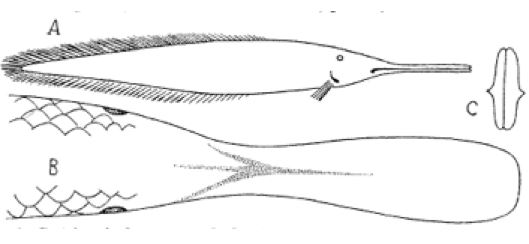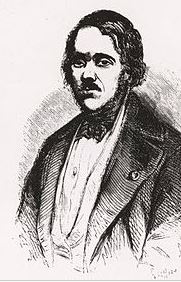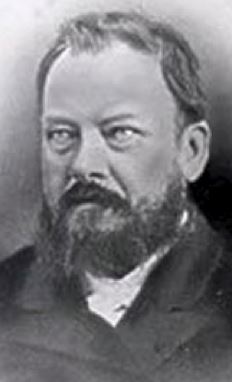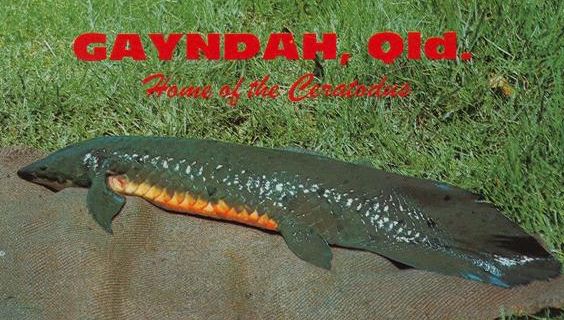Thou deboshed fish thou.
—William Shakespeare, The Tempest
 The Global Biodiversity Information Facility (GBIF), the world’s largest backbone taxonomy of plants and animals, contains the following entry:
The Global Biodiversity Information Facility (GBIF), the world’s largest backbone taxonomy of plants and animals, contains the following entry:
OMPAX CASTELNAU 1879
Accepted genus
According to: Interim Register of Marine and Nonmarine Genera
Kingdom Animals
Phyllum Chordata
Class Sarcopterygii
Order Ceratodontiformes
Family Neoceratodontidae
Genus Ompax
This is the record of a fish that has never been found, indeed never existed. Ompax was an invention, a scientific hoax sprung in outback Queensland at the height of excitement over new species and how they might fit in Charles Darwin’s atheistic theory of evolution. It fooled Australia’s scientific establishment, which remained sceptical but discomfited for half a century by its inability to explain the fraud.

A contemporary sketch of Ompax, the fish that never was
Today the Zoological Society of London is more concerned with wildlife epidemiology or evolution and molecular ecology research, but in the nineteenth century it was the pre-eminent registry authority, struggling to keep track of the explosion of discovery of new plants, animals and fishes being reported by professional and amateur naturalists around the world.
Its leather-bound Zoological Record for 1879 reported and described one thousand new species, commenting that “this shows a remarkable activity among the systematic zoologists”. Among that list was: “A New Ganoid Fish from Queensland; Castelnau, p.164, pl. XIX.A.” The Recorder of Fishes and Snakes for the Zoological Society at the time was A.W.E. O’Shaughnessy of the British Museum, who is better known today as a minor English poet for his Ode, beginning:
We are the music makers
And we are the dreamers of dreams
He seemed inclined to think that Castelnau was dreaming with this new fish which he had named Ompax spatuloides:
Castelnau founds a new genus, and probably a new family, on a specimen of Ganoid fish allied to Atractosteus which had been eaten for breakfast by a Mr Staiger, and all the characters of which are gathered from a drawing made after and not before the repast. He designates it, “in the present state of our knowledge of this fish, by the mysterious historical name of Ompax”. In the present state of our knowledge, the Recorder thinks he would be scarcely justified in admitting Ompax spatuloides sp.n., into the system.
Very probably, it was only Castelnau’s reputation as an experienced collector and reporter of Australian species that led O’Shaughnessy to include his note on Ompax at all. Perhaps, after the scientific community’s earlier disbelief of another exotic animal from the same colony, the platypus, he was hedging his bets.
The platypus was known by settlers from the earliest days, another odd creature in the land of the kangaroo and koala. It received top billing in an 1860 anonymous poem popular in Britain about Australia:
There is a place in distant seas
Full of all contrarieties;
There, beasts have mallards’ bills and legs
Have spurs like cocks, like hens lay eggs.
When a dried specimen had been sent to Dr George Shaw of the British Museum in 1798, he first thought it an elaborate hoax. He assumed that, like P.T. Barnum’s Feejee Mermaid, constructed for the sideshow trade from a young monkey and a big fish, the platypus would be “the beak of a duck engrafted on the head of a quadruped”. Shaw took a pair of scissors and cut the pelt, but was startled not to find a taxidermist’s stitches in the fur. The animal was real.
Shaw’s platypus entered the records as Ornithorhynchus anatinus, mixing Greek and Latin (bird-snout, duck-like), a mammal whose unique characteristic of laying eggs like a reptile (oviparous) was not (despite many observations by Aborigines and colonists) accepted by the British scientific establishment until eighty-five years later.
Sir Richard Owen, of the British Museum and a noted anti-Darwinian, had insisted the platypus gave birth to live young (ovoviparous). The matter was settled by W.H. Caldwell’s famous telegram from Gayndah in 1884: “Monotremes oviparous, ovum meroblastic”—meaning that mammals like the platypus and echidna laid eggs like a lizard’s in that only part of the egg divides as it develops.
Notwithstanding the reservations O’Shaughnessy had expressed, the scientific world kept Ompax alive. Leading Sydney amateur naturalist Sir William Macleay included it in his 1881 Descriptive Catalogue of Australian Fishes, but uncertainly:
I think it is probable that no such Fish was ever found, but I give it a place in my Catalogue, in order to direct attention to the subject, as the likelihood of finding Ganoid Fishes in Queensland waters is asserted by several very distinguished Naturalists.
Famous American ichthyologist David Starr Jordan was listing it in his Genera of Fishes in 1919 and his Classification of Fishes in 1923; while A.R. McCulloch, zoologist of the Australian Museum, included Ompax in his Checklist of Fishes and Fish-like Animals of New South Wales as late as 1929.
More surprisingly, William N. Eschmeyer’s authoritative The Catalogue of Fishes, with 25,000 entries, first published in 1998 and updated in 2004, included Ompax with this notice: “Perhaps mythical based on a drawing that is probably a rough representation of Epiceratodus teller according to Jordan.”
The problem was that in the heated atmosphere of competition to find new species, nobody had produced evidence that at least one Ompax had not existed. Scientists were stumped by the paradox: “Absence of evidence is not evidence of absence.”
 How was a naturalist as experienced as Castelnau taken in by the deception? Francois Louis Nompar de Caumont LaPorte (right) (who later appropriated the title Comte de Castelnau) had spent four years studying the fauna of the Canadian lakes and another five leading a French scientific expedition that crossed South America from Rio de Janeiro to Lima.
How was a naturalist as experienced as Castelnau taken in by the deception? Francois Louis Nompar de Caumont LaPorte (right) (who later appropriated the title Comte de Castelnau) had spent four years studying the fauna of the Canadian lakes and another five leading a French scientific expedition that crossed South America from Rio de Janeiro to Lima.
When he joined the long list of French scientists attracted to the antipodes, he became fascinated by the novelties of the aquatic life. He reported on the marine life of Sydney Harbour, and described species from the Gulf of Carpentaria to the Brisbane River. So when he received a letter with a sketch of a fish from one of his correspondents, Karl Staiger, Secretary of the Brisbane Museum, he suspected nothing. Rather, he devoted himself to its correct scientific placement.
The result was a paper read to the Linnean Society of New South Wales in 1879: On a New Ganoid Fish from Queensland. It started by recounting how seven years earlier and before he worked for the museum, Staiger, a chemist, had been served a very remarkable fish at Gayndah in the Burnett Valley. It was found in a single waterhole in the Burnett River, he was told, and had been brought in by blacks from eight or ten miles away:
I had the fish for breakfast, remarked its curious shape, and asked the then Road Inspector to draw it for me, which he did. Ceratodus, not well known then, formed the dinner. I was not connected with any scientific body, otherwise I would have, at any rate, preserved the head. The person who drew it is not an ichthyologist but still a draughtsman.
From the accompanying sketch, Castelnau identified the long crocodile back, which placed it as a ganoid species until then only found in America. The snout had very much the form of a platypus. The fish that came nearest to it was the Atractosteus spatula or Alligator Gar of French naturalist Bernard Germain de Lacépède, as depicted in his Histoire Naturelle des Poisson, but excitingly, it was different.
What significant name to give this singular fish? Castelnau decided on what he called “the mysterious historical one of Ompax”—a word from the closing rites of the Greek Eleusinian Mysteries (Konx Ompax), in the cult of Demeter. Goodbye and God bless you, indeed! Spatuloides he added to define the spatula-shaped snout or bill. “It is much to be desired that some specimens will soon be found and secured for one of the Australian museums,” he concluded.
When it is recognised that the 1870s was a decade of scientific excitement in Australia—the discovery of exotic fish and animals (as well as the riddle of marsupial birth)—it is easy to understand how the pranksters of Gayndah, on the banks of the Burnett (home of the platypus and the lungfish) set the bait that entrapped Staiger and Castelnau.
 On January 17, 1870, readers of the Sydney Morning Herald had been treated to news of a world scoop, understated in a single-column letter to the editor. Gerard Krefft (left), Curator of the Australian Museum, broke with scientific practice to make a public announcement of the discovery of an amphibious fish with both lung and gills, its teeth resembling some fossil-fish of the Liassic Period, and with four paddle-like fins. It proved indeed to be a lungfish, the world’s oldest living vertebrate, surviving from the time of the dinosaurs.
On January 17, 1870, readers of the Sydney Morning Herald had been treated to news of a world scoop, understated in a single-column letter to the editor. Gerard Krefft (left), Curator of the Australian Museum, broke with scientific practice to make a public announcement of the discovery of an amphibious fish with both lung and gills, its teeth resembling some fossil-fish of the Liassic Period, and with four paddle-like fins. It proved indeed to be a lungfish, the world’s oldest living vertebrate, surviving from the time of the dinosaurs.
The fish may have been unknown to science, but it was common knowledge to early settlers on the Burnett and Mary rivers in the Wide Bay District, who relished its pink flesh as “Burnett salmon”. For a time it was confused with a different fish in the Dawson River which natives called barramoonda. But the Aboriginal name for the lungfish, the German naturalist Semon found later, was Djelleh. The barramoonda (Scleropages leichhardt) was no relation either to today’s popular barramundi (Lates calcarifer).
Krefft was presented with a box containing two fish by his old friend William Forster, who was then the New South Wales Minister for Lands. As a leading squatter Forster had taken up land in the Burnett Valley. Today the Eidsvold Historical Society insists that Forster deserves no credit—he was sent two salted specimens without entrails collected by his cousin, William McCord of Coonambula station, an active amateur naturalist, who had been trying for years to get the fish noticed.
What happened next was described by Krefft in a letter to a fellow scientist:
Said Mr Forster: “Well Krefft, what are those fish?” Said I: “Cannot tell you till you allow me to examine them.” Said Forster: “Do so, you are welcome to them. I present them to you, if you will name them after me.” I replied: “I will,” took my knife out, exposed the teeth and told Forster: “Never saw anything to equal this in my life.” “Are they new?” said Forster. “No”, I said, “They are old as the mountains of Australia, and if you will let me alone we will make a fortune with these fishes.” “Well” (were his last words) “take them away, do what you like with them but make the discovery known in tomorrow’s Herald.” Of course I had to keep my word and other people earned the benefit.
So Forster got the credit for the discovery. Krefft received wide acclaim in London’s scientific circles for his correct identification of the fish as Ceratodus. His naming of the genus as forsteri was accepted.

Krefft’s Herald letter, which was seen as self-promotion, and especially his implication that as an amphibian Ceratodus provided support for Darwin’s theories, set him at odds with the museum trustees. Here would be evidence of the fish’s transformation to a land animal. The Origin of Species by Means of Natural Selection, published only eleven years earlier, had found a lack of sympathy in Australian zoological circles—“prejudices against his views”, as Darwin himself put it. A column by “Doctor Positivitus” in the Herald in April 1869 typified the counter-attack the churches had mounted:
The apostles of the religion of humanity have banished the Creator from His works; they have destroyed the filial relation between man and his Maker; they have deposed the ruler and judge of His world; they confound man with nature; they have, by abolishing a future life, made the present life not only not worth living, but a curse in itself. But we quite feel that in one respect these reformers have improved upon the “old subjective Bible and prevailing beliefs”. They have imagined a hell worse than that of the theologians, and would turn the world into that hell.
When Darwin’s Descent of Man and Selection in Relation to Sex came out in 1871, it re-energised the debate. The Herald ran a huge review from the Times over three days, exposing “the fascinating fallacies of the remarkable work”, and in a lighter vein, this jibe reprinted from the Cincinnati Times:
Darwin’s theory concerning the descent of man is creating a tremendous sensation among the monkeys. They had just heard it, and are terribly exercised. They repudiate the whole theory. That man descended from them they consider a slur on the entire monkey race.
Krefft’s scientific paper Description of a Gigantic Amphibian was read to the Zoological Society of London in April 1870; by then he had written (probably in German) with full details and an excellent photograph by Harry Barnes, to his friend Dr Albert Gunther, who was working on his monumental Catalogue of Fishes in the British Museum. This would have side-stepped Sir William Owen (“On the side of the angels”), Superintendent of the Museum’s natural history collections, and a powerful antagonist of Darwinism.
When he was able to dissect the first specimens, Gunther published the full anatomical details including its lung, in his paper read to the Royal Society in March 1871: Description of Ceratodus, a Genus of Ganoid Fishes, Recently Discovered in Rivers of Queensland, Australia. But he did not believe the lungfish was an amphibian. He said it most likely simply came to the surface to breathe when the water became too brackish. It was far too heavy to walk on its paddle-fins.
Then followed a flood of specimens to London, some sponsored by Edward Smith Hill, retired wine and spirit merchant, amateur botanist and geologist, anti-Darwinist, museum trustee and no friend of Krefft. Hill and fellow trustees William Macleay, Captain Arthur Onslow and Dr James Cox were assiduous private collectors—often, Krefft believed, at the expense of the museum.
It seems that Krefft’s troubled relationship with the museum’s board of trustees deteriorated sharply from his Ceratodus triumph. There were outrageous allegations on both sides, and Krefft’s Prussian dogmatism didn’t help. It culminated in an inquiry by a select committee of the Legislative Assembly, and his dismissal in 1874.
When Krefft refused to accept its validity (he had been appointed by the government, not the trustees), Hill led the posse to evict him from his museum residence. Recruiting a pair of pugilists—Thomas and Phillip Kelly—from Kiss’s Horse Bazaar, Hill saw to the breaking down of the doors of the apartment and the ejection of the curator onto Sydney’s College Street.
With that, Australia lost its most outstanding naturalist, author of The Snakes of Australia and many other papers, the man who first identified the lungfish. Despite courts finding his dismissal “altogether illegal, harsh and unjust”, the trustees and government refused to pay the compensation awarded. By the time a settlement was reached, and the international medals bestowed for his scientific work were returned to him, Krefft was insolvent and virtually destitute. He died in 1881.
If Krefft had a gentler and humorous side, it was shown in a piece of doggerel written for his little son, which indicated how important Ceratodus forsteri had been for him:
Lucullus ate Muraena rare,
In Rome the daintiest dish,
And Squatters on the Burnett dined
On geologic fish.
The last word on his scandalous treatment was written by Germany’s Goethe Institute:
He had considerable zoological knowledge with a particular interest in snakes. And well he might have had since, before very long, he fell victim to the materially successful and self-gentrified wild colonial serpents on the board of the museum.
“Now that all biologists are Darwinists,” William Hay Caldwell cheekily challenged the Royal Society of NSW in 1884, well aware of the colonial antipathy to natural selection, “pedigree hunting has gone out of fashion.” After the turbulence of the 1870s, this twenty-five-year-old Cambridge embryologist had arrived with a huge grant of £500 in his pocket to tie up all the loose ends on Ornithorhynchus and Ceratodus.
Focusing immediately on the Burnett, Caldwell set up camp on its banks near Gayndah and employed a small army of Aborigines to capture specimens of echidna and platypus, as well as trying to locate the roe of the Ceratodus. Because of the call to document every stage in their embryological development, there was a spectacular slaughter of the mammals.
Just when he was despairing of success he had the luck to shoot a platypus in the moment between laying its two eggs, enabling him to send his famous, and famously economical telegram. As an encore, with the help of Aboriginal women searching the shallows, he was also able to find Ceratodus roe in its ideal repository of a reed bed. But it was left to Richard Semon, the young German embryologist to document the fossil-lungfish fully in 1891.
There is no record of Caldwell being offered an Ompax while at Gayndah. The hoax could only have worked on a non-scientist, or a zoologist relying on a second-hand report from hundreds of miles away at the frontiers of settlement. Nevertheless the mythical beast continued to linger in the scientific literature, like the mermaid, half suspect, half devout wish, until 1930.
In August that year, the Bulletin, on its “Aboriginalities” pages, published a brief note over the pen-name “Waranbini”:
A sweet-scented gum (E. staigeriana) of the northern parts of Queensland perpetuates the memory of Carl Theodore Staiger, who was at one time director of Brisbane Museum, and was made the victim of one of the quaintest jokes in scientific history. While he was visiting Gayndah station the hard-cases there prepared a new fish for Staiger, made of the head of a lungfish, the body of a mullet and the tail of an eel. It was nicely cooked and placed before him with the remark that it was something new—a very rare fish that had never been seen anywhere but at Gayndah.
Waranbini’s story went on to recount that Mr Staiger had been immensely interested, and before he started to eat the cooked specimen made a careful sketch which he sent to an ichthyological expert, Count Castelnau. That gentleman named it Ompax spatuloides. “Whenever a marine mystery was captured afterwards in the Gayndah district,” Waranbini concluded, “the locals would remark with a grin that ‘it must be an Ompax!’”
Fifty years after the event, Waranbini could be excused for his errors in Karl Staiger’s title, the fact that Gayndah had been proclaimed a town in 1849 or the anatomical details of the fish, which certainly didn’t have the head of a Ceratodus. Nevertheless the old bushman, reteller of countless outback tales, effectively blew the whistle on the stunt.
The Bulletin report was picked up by the ornithologist in the Australian Museum, J.R. Kinghorn, who immediately showed it to the museum’s ichthyologist, Gilbert P. Whitley. The result was “Ompax spatuloides Castelnau, A Mythical Australian Fish” published in the American Naturalist (Vol. 67, No. 713, November-December 1933) which was intended to lay the Ompax ghost for all time.
Whitley demonstrated his disdain for the prank by opening his scientific paper with a quote from Romeo and Juliet: “O flesh, flesh, how art thou fishified!” He went on in superior tone: “Systematic ichthyologists usually encounter sufficient difficulties in identifying natural species without having fraudulently ‘manufactured’ fishes brought before their notice by practical jokers.”
After recounting Waranbini’s exposé, he concluded: “It is obvious that Ompax spatuloides is a purely mythical genus and species, whose disgraced name must be removed from the Australian list.” That should have done it, but as we have seen, it didn’t. And some tantalising questions remain.
Who were the authors of the hoax? Was the road inspector in on the jape? What was Staiger’s motive in resurrecting the fraud seven years later? Was Castelnau really taken in by the story and the extremely fishy sketches? Finally, who was Waranbini? Unfortunately the trail has gone cold. The museum in Gayndah, the town which considers itself the home of Ceratodus and knows all about the Ompax story, says no local gossip has come down the generations to throw light on the mystery.
Waranbini was not a Burnett local, but seems to have been an old bushman originally from the Richmond district in northern New South Wales. Between 1919 and 1940, he contributed more than fifty bush tales to the Queenslander, the Bulletin, Smith’s Weekly and the “Australiana” column of the World’s News in Sydney. These ranged so widely—from the swaggie sleeping in a hollow log to blacks trapping emus (and others possibly apocryphal)—that it’s impossible to identify where he was writing from. His pseudonym in some native languages means “carpet snake”. Unless a Quadrant reader knows something more, the story ends there.
When I was growing up, we little boys liked to play this trick on our parents: “I am going to show you something you have never seen before, and once seen, you will never see again—how can that be?” I would then take a nut from my pocket, crack it, hold up the kernel, then eat it. Ompax spatuloides Castelnau, once eaten, never seen again, was the ultimate version of this game from the Boys’ Book of Magic.
A final literary note: Wikipedia’s entry on the Eleusinian Mysteries contains this observation: “In Shakespeare’s The Tempest, the masque that Prospero conjures to celebrate the troth-pledging of Miranda and Ferdinand echoes the Eleusinian Mysteries, although it uses the Roman names for the deities involved—Ceres, Iris, Dis and others—instead of the Greek. It is interesting that a play which is so steeped in esoteric imagery from alchemy and hermeticism should draw on the Mysteries for its central masque sequence.” Konx Ompax!
Geoffrey Luck, a frequent contributor to Quadrant, is a retired journalist.
 Sign In
Sign In 0 Items (
0 Items ( Search
Search









Somehow I could not stop myself from relating the treatment of Krefft (by the terminally ignorant vested interests) to that of climate change sceptics as both Ompax and global warming are scams perpetuated beyond their use by dates